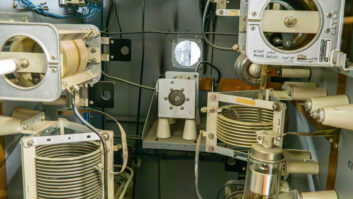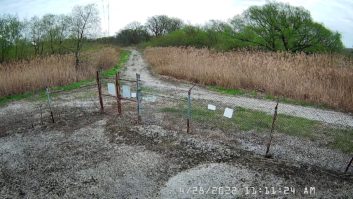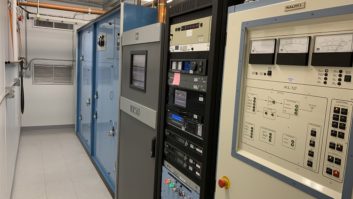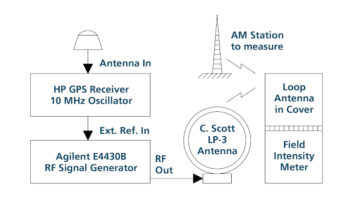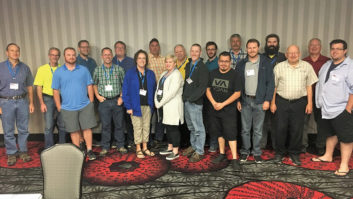Maintaining older transmitters can be fun, if you know what you’re looking for.
Stu Tell used to work in broadcast engineering and still lives the life of the engineer through the pages of Radio World. He says RW gives him the chance to think like a CE again.
For new engineers maintaining old AM transmitters, Stu offers a tip that will make you look like a hero. Check the value of the 2-watt carbon resistors used throughout these old rigs. Stu writes that he’d be a wealthy man if he had just a penny for every one he found broken, open, charred or changed to some astronomically high value.
The larger transmitters, like the old RCA 5E (the fore-runner of the BTA-5) used both 2-watt and higher wattage wire-wound resistors. Once the tubes are biased with the correct resistor values, an ugly sounding rig can sound pretty sweet again. This is especially true of the modulators and finals have decent emission.
The lesson here is not just to change the tubes, but check the biasing resistors, too. Stu also made it a point to check the feedback ladders voltages back to the first stage. Using a scope, make sure they are equal in voltage. If the voltages for each modulator feedback ladder aren’t the same, you know there’s a problem.
The feedback ladder resistors also can change, so check those as well. The old tube rigs can be made to sound pretty good, they just need a little TLC.
As for tower light sampling, Stu found Class-1 Current Sensing Transformers for 60 Hz that are just $4.25 each in the latest Jameco Catalog, page 54. You can order replacement resistors for your transmitter from Jameco as well. You can register online for a new 192-page color catalog at www.jameco.com.
. . .
If you have pressurized AM, FM or STL transmission lines, you may have a dehydrator that purges those lines, drying out the air, to keep moisture from building up inside.
The moisture changes the line impedance and in severe cases can cause a flashover inside the line. The resulting burned Teflon and carbon makes for a very bad day. In most cases, the line has to be replaced. If it’s not properly maintained, i.e., pressurized, there’s no insurance claim. The moral to
(click thumbnail)Fig. 1: The panel of this Andrew dehydrator has a sight glass, filled with desiccant crystals.
Fig. 1 shows the front panel of a typical dehydrator. Because this is an automatic dehydrator, desiccant replacement is not required. In the upper left is a sight glass, filled with desiccant crystals. The sight glass gives you an indication that the automatic dehydrator is working properly.
Automatic dehydrators employ two drying cylinders or towers. While one tower is drying the air passing through it, a small portion of dry air is supplied to the second tower, purging its desiccant of accumulated moisture.
Manual dehydrators have a crystallized desiccant that adsorbs the accumulated moisture. As the desiccant becomes saturated with moisture, it changes color. Fresh desiccant is deep blue; when saturated with moisture, the crystals change from blue to pink. The manual dehydrator requires periodic replacement of the desiccant, typically when it has a pinkish tinge.
The desiccant should be saved, as saturated desiccant can be reactivated. Reactivation requires heating the desiccant to 350 degrees Fahrenheit for four hours in an ordinary oven. Typically, the desiccant crystals are spread out over a foil-line cookie sheet and “cooked” for four hours. After cooling, the crystals can be returned to the desiccant container. Owners of manual dehydrators should keep at least one canister of “fresh” desiccant on hand, so the replacement of fresh desiccant is simplified.
Want more information on the care and feeding of your dehydrator? Contact Andrew Corp.’s Customer Support Center at (800) 255-1479 and request a copy of Bulletin 1557. Tell the representative that you heard about this publication from the pages of Radio World. The bulletin is free, and its 10 pages also include troubleshooting, maintenance and answers to some common dehydrator questions.

. . .
(click thumbnail)Fig. 2: Secure your nitrogen tanks with a chain like this one.
Engineers who simply pressurize their line with a bottle of nitrogen aren’t off the hook either. In addition to checking the pressure and tank volume to guard against the tank going empty, make sure the tank is secured.
A simple chain, shown in Fig. 2, will keep the tank from falling.

. . .
Mike McCarthy of McCarthy Radio Engineering sent in the poem shown here from an IBEW periodical. The authors are Mickey Toole and Jeff Pfouts of IBEW Local 1547 in Anchorage, Alaska.
He thought it was dead, but alas it was hot.
It’s still live, and he is not.
He knew in his head good practice well founded.
The circuit’s not dead, until it is grounded.
But this time he hurried, didn’t take time to test it.
He was tired, and cold, and needed a respite.
A respite he got, for it will be a long one.
One dead and one hot, and he grabbed the wrong one.
There’s been many like him, many have died.
The cause of their deaths was ASSUM-A-CIDE.
Mike adds that as we approach those long, cold nights working on the transmitter, make doubly sure that safety switches, shorting bars, disconnects and lock-out/tag-outs are in place and functional. Tell people where you are and for how long. If possible bring a person with you when working on or near high-voltage equipment.
At the fall Transmitter Workshop at the Seattle Radio Show, a point of discussion was having a buddy accompany you to the transmitter site. Several engineers said their wife or girlfriend stood in. Contract engineers arranged for the station to pay for two engineers during overnight work.
It was also suggested to have your PD or GM accompany you to the site. Not only will it give them some perspective of the work you do, but you’ll earn a little more respect when they see the inside of a transmitter or phasor. This isn’t black magic, but it sure looks that way at 2 in the morning.
. . .
Friends of the broadcast industry Dale Tucker and Dean Tiernan are always good for some great radio stories. Just to show that as broadcast engineers, we don’t have all the fun, visit this Web site they told me about: www.enertech.net/pictures/powerlines.html.
The site, provided by an energy company, Enertech, includes pictures of how Mickey Mouse would design electrical transmission poles, if he had his way. There’s also a shot showing why a squirrel makes a very poor conductor, as well as a crumpled transmission tower. Enjoy!
Submissions for this column are encouraged, and qualify for SBE recertification credit. Fax your submission to (703) 323-8044, or send e-mail to [email protected].
